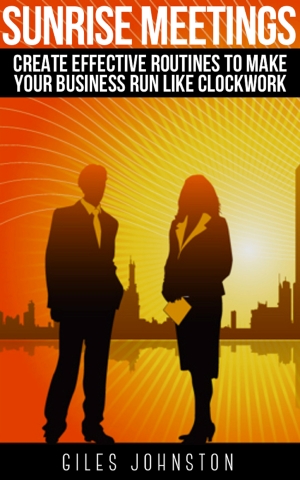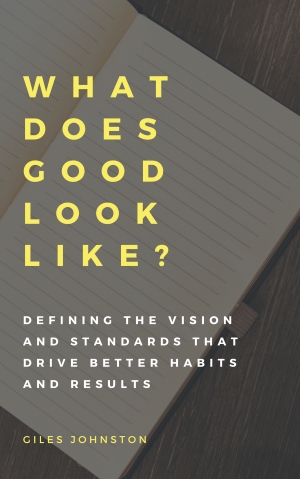I sat in a good meeting the other day. All the right people were in attendance and there were some good topics being discussed. I found out what I needed to find out, for my project.
I’d sat in the same meeting the week earlier. Again, a good meeting but some of the items I had expected to be touched upon this week were missing.
My look of confusion must have been obvious to the owner of the company, who was chairing the meeting.
“Everything ok Giles?” he asked.
“Have I missed an update on machine maintenance, the scheduler go live date and an update about the apprentice training? I enquired.
The whole team looked at each other, as they realise that they had not followed up on these key topics.
“Do you have a formal agenda for this meeting?” I added.
Out of your head and onto paper
What happened in this meeting is no different to what happens in lots of business meetings. It could have been a great meeting, but it missed the mark.
An initial meeting is pulled together due to an issue in the business. As progress is made, it becomes a routine meeting and other items get thrown into the mix of the meeting’s discussions. As the discussion takes longer each time the team meet, items that don’t have any clear progress to report get slowly pushed to the back of the informal agenda, until they are forgotten about.
The purpose of defining standard agendas for your routine meetings is to take your memory away from the meeting. If you have the agenda written down, you have a good chance of reviewing everything that you should be reviewing. No more leaving it to chance!
Creating a standard agenda is simple. Take your last few meetings and pull out the generic headings and add in anything else that is relevant and important to the focus for the meeting. That’s it.
Some of the benefits of standard meeting agendas
Let me share with you some of the reasons you might want to embrace standard agendas:
- It avoids the negative evolution of meetings, as it stops you forgetting key topics of discussion.
- If you include a review of previous actions, it helps with the flow of activity.
- It helps with ownership; people need to know what they are there to talk about and own.
- It clarifies expectations, if you can tie ‘what good looks like‘ to the agenda points.
Creating standard agendas is a really simple way to streamline meetings. There is a cost to people attending meetings, tangible and intangible. You have to make the meeting worthwhile; it needs to help increase the value the business produces. A good agenda will help you to reduce the time of the meeting whilst increasing the effectiveness of the meeting.
Implement your meeting agenda
If you don’t have a standard meeting agenda format in your business, then I urge you make a start today.
You can use the strategy I mentioned earlier to give you a head start.
If you want some additional ideas on this subject, I recommend these books from my collection:

Step by step instructions on how to develop an effective meeting format for your team, to drive results and make life easier!
Available from Amazon, Apple Books and other e-reader platforms

Generate better results with your teams by improving the clarity of what you expect to see happen in the business.
Available from Amazon, Apple Books and other e-reader platforms
